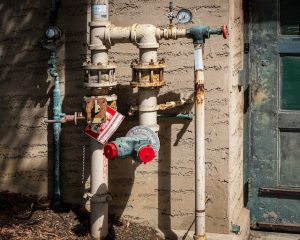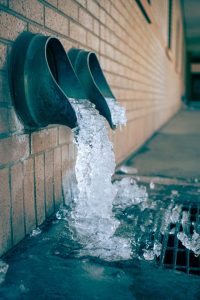Secure Your Home: Understanding the Main Water Shut-Off Valve

When it comes to safeguarding your home against water damage, one often overlooked yet incredibly crucial component is the main water shut-off valve. This unassuming valve plays a pivotal role in protecting your property from leaks, floods, and plumbing emergencies. In this blog, we’ll delve into what the main water shut-off valve is, why it’s essential, how to locate and operate it, and maintenance tips to ensure it functions flawlessly when you need it the most.
The Importance of the Main Water Shut-Off Valve: Imagine a burst pipe or a leaky appliance causing water to flood your home. In such moments, every second counts, and the main water shut-off valve becomes your hero. This valve is responsible for controlling the flow of water into your entire house. By turning it off during emergencies, you can prevent extensive water damage, potential mold growth, and costly repairs.
Locating Your Main Water Shut-Off Valve: Before you can use the main water shut-off valve effectively, you need to know where it’s located. Typically, it’s situated near the water meter or where the main water line enters your home. Common locations include basements, crawl spaces, utility rooms, or even outside. Familiarize yourself with its location so that you can swiftly access it when needed.
Operating the Valve: Learning how to operate the main water shut-off valve is a crucial skill for every homeowner. The valve is usually a round wheel or lever. Turning it clockwise (righty tighty) will shut off the water supply, while turning it counterclockwise (lefty loosey) will open the supply. During a plumbing emergency, shut off the valve to stop the water flow and prevent further damage until the issue is resolved.
Maintenance Tips:
- Regular Checks: Periodically inspect the valve to ensure it’s in good condition and accessible. Dust or debris accumulation can hinder its operation.
- Ease of Use: Apply lubricant to the valve’s components to ensure smooth operation. This can make it easier to turn, especially if the valve hasn’t been used for a while.
- Test Run: Test the valve once or twice a year to ensure it’s working as intended. Shut off the water supply, then turn it back on. This action not only checks its functionality but also helps prevent the valve from seizing due to lack of use.
- Professional Inspection: Include the main water shut-off valve in your routine plumbing inspections. A professional plumber can identify and address any issues promptly.
- Labeling: If you have multiple shut-off valves in your home, consider labeling them for easy identification. This step can be a real time-saver during an emergency.







